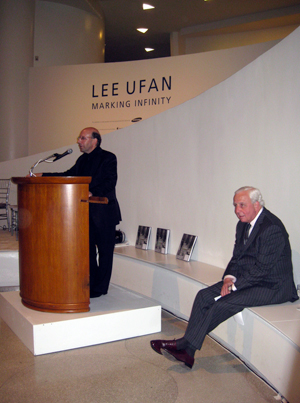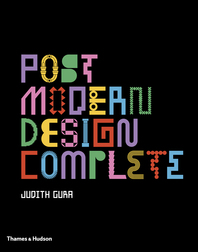Two high-profile New York architects band together.
Charles Gwathmey's death in 2009, following a long battle with esophageal cancer, left his esteemed firm, Gwathmey Siegel & Associates Architects, in an uncertain state.

Gwathmey and Robert Siegel co-founded the New York practice in 1968, and during their 43-year partnership, the two collaborated on more than 400 projects—many of them private homes and educational and cultural buildings. Their work style was a one-two punch: they designed together in the early phase of a commission and then split off, with Gwathmey taking the lead on smaller residential projects and Siegel generally shepherding large-scale schemes involving many clients.
At the time of Gwathmey’s death, the firm had 65 employees and a resume filled with high-profile projects, including the addition to the Solomon R. Guggenheim Museum (1992); the design of the Naismith Memorial Basketball Hall of Fame in Springfield, Massachusetts (2002); and the renovation and expansion of Yale University’s Art and Architecture Building (2008), originally designed by Gwathmey’s mentor, Paul Rudolph.
Following his business partner’s death, Siegel, 72, knew he would need to evolve the firm, but he wasn’t sure how. Though many domestic and international firms courted him, including two in Korea, he turned them away. “I really like the idea that architecture is something you make, that you are accountable for, that it’s not a big corporate activity,” Siegel says. “They made some appealing financial offers, but it just wasn’t the right world for me.” Despite having to lay off staff, Siegel wasn’t interested in teaming up with another firm—until he got a call from the New York architect Gene Kaufman.
Known for commercial buildings, condominiums and hotels, Kaufman was dubbed “Mr. Prolific” by the New York Times. His firm has designed more than 60 hotels in the New York region since 2000, many with the McSam Hotel Group, for clients including Marriott, Hyatt, Sheraton, and Hilton.
Gene Kaufman’s eponymous firm operates in a different sphere than Gwathmey Siegel. Still, Siegel was drawn to Kaufman’s preference for hands-on, personal design. In June, the two architects formally announced their new partnership and the firm’s new name: Gwathmey Siegel Kaufman & Associates Architects. The office has 50 employees, with 30 from Gene Kaufman Architect and 20 from Gwathmey Siegel, which had downsized in recent years. Kaufman, 53, will continue to operate his own practice on the side as he works to integrate the two firms.
RECORD recently spoke with Siegel and Kaufman about the genesis of their partnership and what comes next.
Laura Mirviss: [To Kaufman] Why did you pursue Gwathmey Siegel?
Gene Kaufman: You know, after the downturn, I felt like the best thing for my firm was to forge an alliance with somebody who had strengths in areas we don’t. It was a new world, a new economy—maybe a non-economy. So, I embarked on a quest to diversify my firm.
As far as I know, there are three consultants in the United States who help architects do things like this, and I actually hired all three of them. My example to them of an ideal partner—as a firm—was Gwathmey Siegel. They said, well obviously, this is not a possibility, and they devised a long list of alternatives. I met with many people who were very nice and interested, but after an entire year, I said to the consultants, “You know, it’s still not what I had in mind, it’s still not a firm like Gwathmey Siegel.”
At that point, I sent Bob an email. I didn’t know him, he didn’t know me, and out of the blue, I told him what I was interested in and asked if he wanted to talk. And, Bob, as I recall you got back to me within an hour or so, even though you were in the Middle East. You said, ‘You know, why don’t we talk?’ That was more than a year ago.
[To Siegel] Why did this seem like a good arrangement to you in particular?
Robert Siegel: The period following Charles Gwathmey’s death was difficult for my firm, from both an emotional and business perspective. After 43 years of having a very productive partnership, half of us was missing. We continued to operate, and we had some interesting projects, but we weren’t generating enough work, at least in terms of what I thought the office should be doing.
I was interested in talking with Gene because he has cultivated a very successful practice with private developers. It was an opportunity to radically increase our outreach to a new client base, which was attractive to me because in this economy, opportunities for new work are thin. You must be able to offer services that are unique, that are outstanding.
What do you offer as a team that you couldn’t offer on your own?
RS: We’re bringing together diverse cultures and creating a strong, combined unit. Gene Kaufman Architect is well known for its ability to solve problems financially, to bring great practical expertise to the table. Gwathmey Siegel’s strength has always been its design expertise, which improves the environment and helps people feel better. As a combined firm, we might appeal to developers who have been hesitant to work solely with Gwathmey Siegel or Gene Kaufman Architect.
[To Siegel] What are some of your ongoing projects?
RS: We’re very excited about starting the expansion of the Museum of Contemporary Art in North Miami, which was a building Gwathmey Siegel completed about 12 years ago. It was a small project, and now it will have about 30,000 square feet of exhibition space. I’m personally excited about this project because we want the world to know that we’re still actively involved in cultural and civic buildings.
We’re also in the midst of finishing two large residences—one in Maine and one in Aspen. The private residence has always been an important building type here at Gwathmey Siegel. It’s a wonderful area of work, so I’m pleased that we’re continuing in this area.
We’re also starting the construction of a school of business and economics at the State University in Plattsburgh, New York. University work had slowed down in recent years, but it might be picking up. The idea of a new building, not just a renovated building, particularly within the state university system, is a very good signal.
Any hospitality projects in the pipeline?
GK: Bob and I are working together on a new luxury hotel [at 1414 Sixth Avenue], a block away from Central Park. It’s a building that had been in play for a long time. It passed through a couple hands, but was recently acquired by one of our clients, Starwood Capital. We’re now working on converting the building into a hotel. We’re also working on a very large project in China, which calls for the development of a vacant island in the Yangtze River, in the city of Wuhan.
[To Siegel] What are your personal plans for the future? Do you intend on winding down?
RS: I feel very good. I’m healthy, I love to work, I love to make architecture. I’m looking forward to a long collaboration with Gene. I’m still sitting at my same desk, I still come in every day at 8:30, and I work on anything I can put my hands on. I’m not going to change.
[To Kaufman] Why are you keeping a separate practice?
GK: There is name recognition for both firms in different spheres. I didn’t want to lose that thread of connection.
Will the work be divided accordingly, or is this just a nominal distinction?
GK: After an initial period of time, we’re going to function like a single entity. Later, it may make sense to change the names of the firms, but certainly at this point I think it makes sense to be the way we are.

